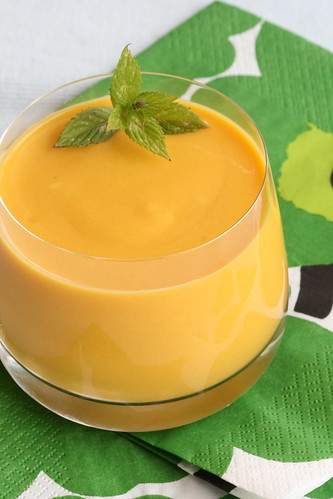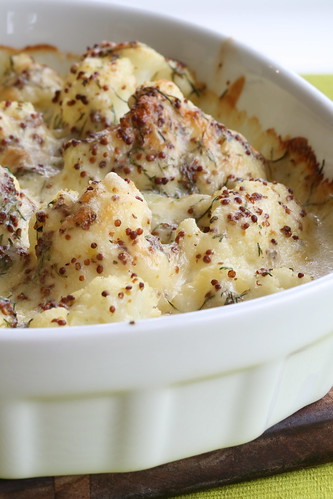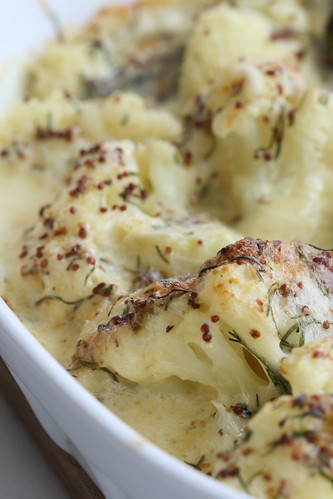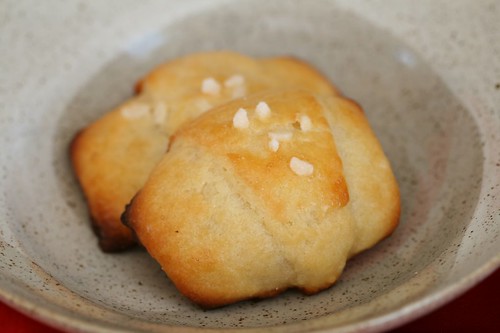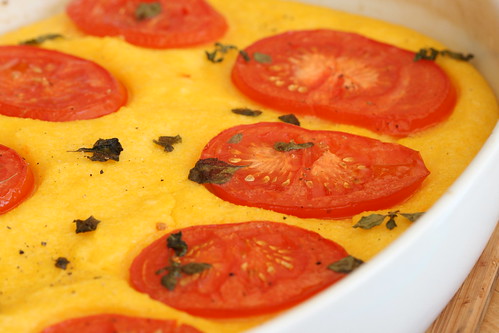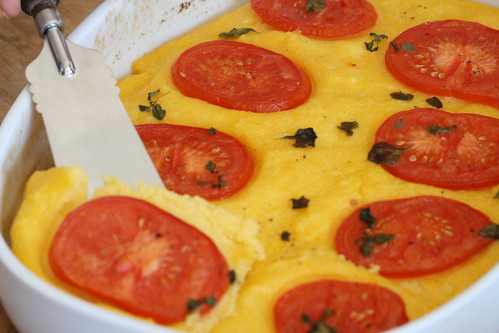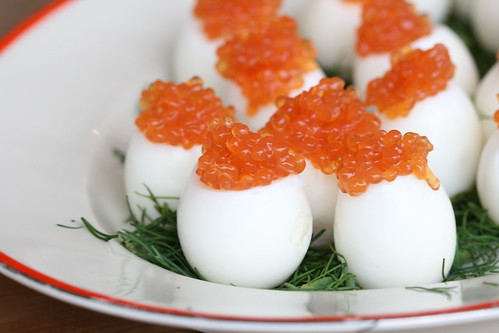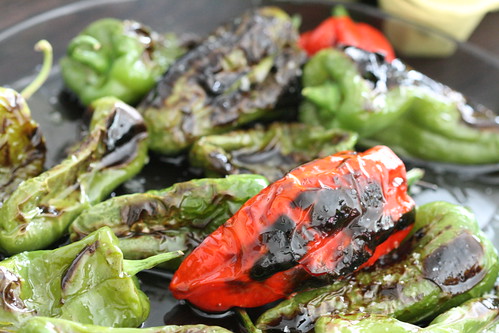
If you look around Estonian foodblogs, then we all seem to feast on thick and filling Russian-style mushroom soups at the moment - Tuuli has been cooking up
mushroom borscht and mushroom rassolnik, Aet has a
mushroom solyanka simmering in her saucepan. We had friends over for dinner last night, and as I had got a large bowl of blanched and slightly salted wild mushrooms from K's mum yesterday morning, and made a Russian-style mushroom soup as well, but with addition of fish.
You'll get a best result if using various wild mushrooms. Gypsy mushrooms (
Rozites caperatus; kitsemamplid),
Russula-mushrooms,
Lactarius-mushrooms - all would be perfect, but cultivated mushrooms would work as well (perhaps a mixture of white mushrooms and shiitake mushrooms for some texture?). I had mainly meaty
Lactarius scrobiculatus mushrooms (võiseened/kollariisikad)*, with an odd
Russula thrown in.
Check your mushroom guide for instructions (some mushrooms - like gypsy mushrooms and many
Lactarius-mushrooms can be cooked fresh, some need to be blanched first.
* Note that Wiki considers this an inedible mushroom (well, "Western authors" do). It's much liked over here for its meaty texture and characteristic flavour. It does need to be thoroughly blanched and cooked first, however, and smaller mushrooms are preferred to larger ones. Mushroom and Salmon SolyankaServes four to six

1 large onion, peeled and chopped
about 400 g fresh (wild) mushrooms - pre-blanched, if necessary
2 Tbsp rapeseed or olive oil
3 Tbsp concentrated tomato pureé
1 litre fish stock
4 medium-sized potatoes, peeled and chopped
300 g salmon filet, cut into 1 cm cubes
2 small pickled cucumbers, halved lengthwise and cut into slices
2 Tbsp capers
a small bunch of dill
salt
black pepper
lemon juice, to taste
Heat oil in a saucepan, add onion and mushrooms and sauté for about 5 minutes.
Stir in the tomato paste, cook for a minute or two.
Pour in the fish stock, bring to the boil. Add the potato cubes, then simmer for about 15 minutes, until the potatoes are cooked.
Add fish, capers, cucumber slices and most of the dill. Simmer for another few minutes, then remove the saucepan from the heat.
Season to taste with lemon juice, salt and pepper (solyanka needs a slightly sour note!).
Sprinkle some extra dill on top, garnish with lemon slice or wedge and serve.
